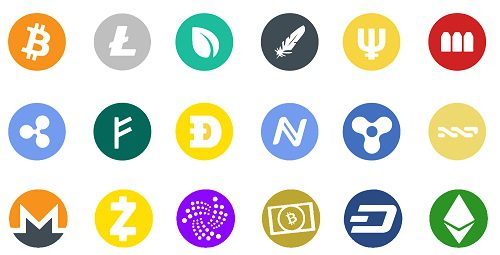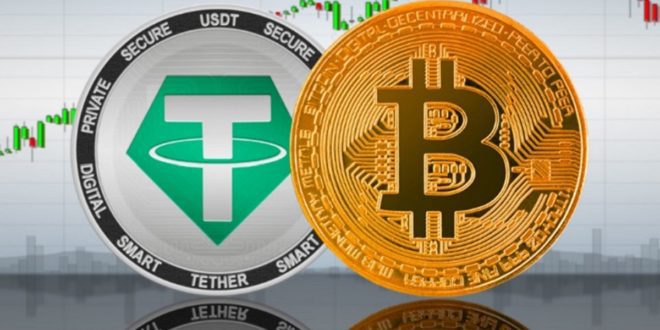What are stablecoins? How many types are there? What are they used for? Can you invest in them? What is their future? This article has the answers to these 5 questions.
Stablecoins: A Definition
According to Alex Gailey, in an article for time.com/nextadvisor from which much of the information for this article has been sourced, edited, abridged, and reformatted for a much faster and easier read:
- Stablecoins (SCs) are a type of cryptocurrency linked to a more stable asset, such as the USD, gold, or other cryptocurrencies, which act as collateral (as a reserve, if you will) for SCs in that, whenever an SC holder cashes out their tokens, an equal amount of assets is taken from the reserve.
- Essentially, SCs are a less volatile cryptocurrency with greater potential to resemble the types of currencies people already use every day.
SC Types
There are a number of SCs, including:
- Tether (USDT):
- Tether is the world’s first stablecoin and is the most transacted and liquid stablecoin in the crypto market with a market cap of nearly $83 billion, making it the No. 3 cryptocurrency overall, behind Bitcoin (BTC) and Ethereum’s Ether (ETH).
- Tether’s goal is to keep its value pegged, 1-to-1, to the U.S. dollar to enable crypto exchanges to offer USDT as an alternative to using fiat currencies so investors can make quick trades.
- Tether is 100% backed by reserves of which about 85% is in cash, cash equivalents, short-term deposits, and commercial paper with the remaining 15%, or so, in other assets and receivables from loans made by Tether or third parties.
- USD Coin (USDC)
- USDC, like many of the coins included on this stablecoins list, is pegged to the U.S. dollar.
- USDC now has a market cap of nearly $50 billion, making it the second-largest stablecoin by that measure.
- USDC runs on many blockchain networks with many crypto exchanges, online wallets, protocols, and other services integrating USDC into their platforms to facilitate easy payments globally.
- Dai (DAI)
- Dai is correlated to the U.S. dollar, but unlike many stablecoins, Dai can also be pegged to different cryptocurrencies, such as Ether, USD Coin (USDC), and others that can be used as collateral.
- The multi-collateral option that Dai offers arguably increases Dai’s price stability as a stablecoin.
- Dai’s market cap is more than $9 billion, making it one of the top stablecoins available for users.
- Binance USD (BUSD)
- BUSD is another U.S. dollar-backed stablecoin, and was developed via a partnership between Binance, one of the most popular cryptocurrency exchanges, and Paxos, a regulated blockchain infrastructure platform.
- The goal of Binance USD is to increase the speed at which digital assets flow through the global financial network.
- TrueUSD (TUSD)
- TUSD was the first regulated stablecoin fully backed by U.S. dollars and has a market cap of more than $1.3 billion.
- TrustToken doesn’t charge any trading fees on its TUSD coins, which is enticing to many investors, but TrustToken Inc. – the exchange that issues TrueUSD – isn’t fully decentralized and users are bound to the standards of the platform. In other words, regulatory actions on the TrustToken platform will affect holders of TUSD.
- TerraUSD (UST)
- TerraUSD’s goal is to remain both price-stable and growth-driven with its protocol stabilized by its own native cryptocurrency, Terra.
- The Terra platform protocols incentivize users to earn extremely low-risk profits when TerraUSD’s price is anything other than $1.
- By linking TerraUSD to the regular Terra (LUNA) coin and allowing LUNA to be exchanged for either UST or dollars (and vice versa), more UST is created when its price rises above a dollar. The UST pool starts to contract when its price is below a dollar. This give-and-take keeps the price of TerraUSD stable with respect to the dollar.
- Although it is rated a bit riskier than the likes of Tether and Binance USD, TerraUSD is classified by the analysis site InvestorsObserver as a low-risk coin.
- Digix Gold Token (DGX)
- DGX works differently than the other stablecoins on this list because it is tied to the value of one gram of gold. As gold’s price fluctuates, so does the value of DGX, which makes the cryptocurrency more volatile but also attractive to investors who believe in the power of hard assets.
- There are roughly 54,600 DGX coins circulating in the market, and the coin’s market cap is just over $2 million.
SC Uses/Advantages
- Maintains all the transactions within crypto exchanges so, for example, if you want to buy more Solana with your Ether, you can swap your Ether for SCs at a U.S. dollar value and then buy more Solana.
- Saves on fees and maintains the value of your crypto during volatile trading periods because many crypto exchanges don’t charge fees when exchanging U.S. dollars into SCs.
- Facilitates the sending of funds across international borders (aka international remittances) although it should be noted that such transactions come with some risk because SCs are not backed by a government entity but, instead, by a private company.
- Makes it easier, faster, and cheaper to exchange altcoins for SCs vs. trading coins for actual dollars in and out of a bank account. For example, you could quickly convert your Bitcoin to SCs pegged to the U.S. dollar, like Tether, and it would continue to live in the exchange you’re operating in and hold its value and you could then exchange those SCs for other coins. If you were to convert your Bitcoin directly to U.S. dollars, it could take longer to enter your bank account and would effectively take it out of the crypto exchange.
Investing In SCs
SCs don’t make for great investments and, as such, are better suited for digital transactions and converting digital assets to and from “real” money.
SCs: Their Future
There is not much in the way of government oversight or regulations related to SCs but, because of their potential for future use by everyday consumers to buy things and operate outside the U.S. monetary system, we are likely to see an effort to do so by federal monetary authorities as the year unfolds.


